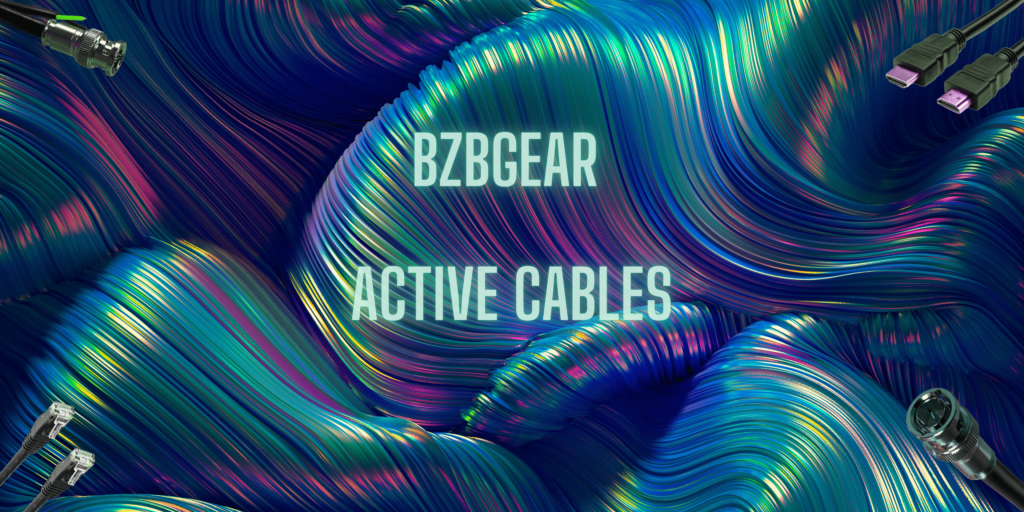A/V Cables
What Distinguishes BZBGEAR Cables from the Competition?
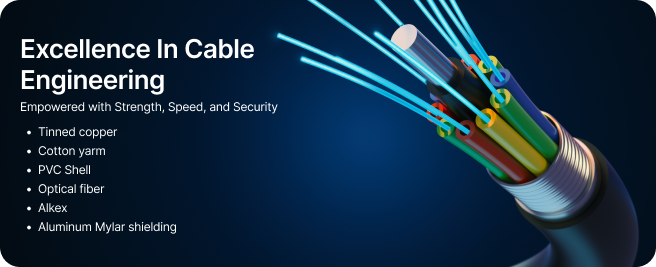
BZBGEAR's active optical cables are meticulously crafted to meet the demands of medium to large-scale professional-grade applications. Our cables surpass the standard offerings found in local electronics stores or major online retailers in terms of strength, length, and efficiency. BZBGEAR cables excel in various aspects, including connection security, transmission speed, resistance to electromagnetic interference, energy efficiency, and more.
Exploring Active Optical Cables
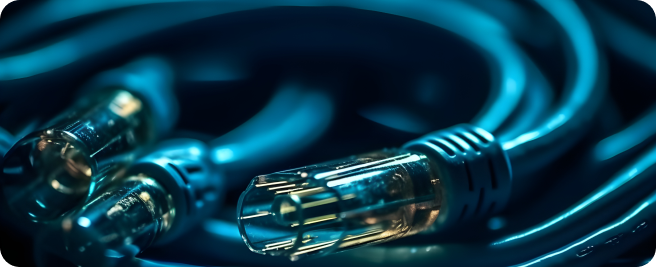
Active optical cables take data transmission to the next level by converting electrical signals into light. This innovation significantly boosts data transmission speeds. Compared to traditional copper cables, active optical cables offer advantages like increased length, reduced weight, slimmer profiles, and heightened resistance to electromagnetic interference.
What Devices Benefit from BZBGEAR Cables?
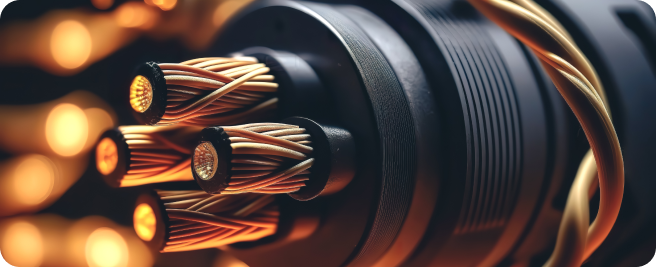
| 3G/12G SDI | USB 2.0/3.0 | HDMI 2.1 | CAT 6 |
| Cameras | USB Cameras | Cameras | IP Cameras |
| Live Production Switchers | Smart TV’s | 4K & 8K TV’s | AV Distribution Eguipment |
| Post Production Equipment | External Storage Devices | External Storage Devices | AV Extenders |
| Video Switchers | Gaming Devices | Gaming Devices | Computer Networks |
| Video Recorders | Computers / Laptops | Captore Cards | Commercial Networking |
| Routing Switchers | Capture Cards | Sounds Bars | Home Networking |
| Graphics Generators | USB Hubs | Home Theater Systems | Data Centers |
| Distribution Amplifiers | Office Equipment | Projectors | Server Rooms |
| Video Capture Cards | USB WiFi Adapters | Digital Signage | Educational Institutions |
| Video Scolers/Converters | Monitors | Monitors | + More |
| Monitors | Peripherals | + More | |
| Video Wall Processors | Select Audio Devices | ||
| Broadcast Servers | + More | ||
| + More |
BZBGEAR cables are designed with medium to large-scale applications in mind. For installations which involve large displays, require continuous video distribution and hardware operation, cameras, or other devices, BZBGEAR stands as the optimal choice for HDMI, SDI, CAT 6 or USB cabling solutions.
HDMI 2.0 vs. HDMI 2.1: A Speed and Capability Comparison
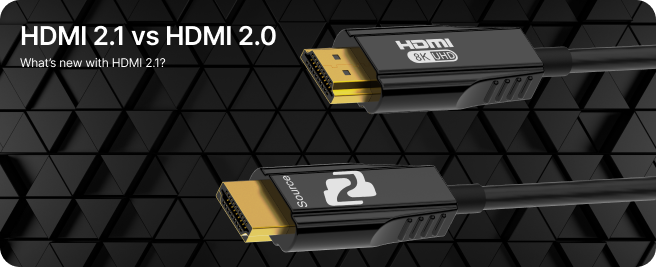
HDMI 2.0 and HDMI 2.1 are two versions of the High-Definition Multimedia Interface standard, and their primary distinction lies in their speed and capabilities.
1. Bandwidth Capacity
HDMI 2.0: Offers a bandwidth capacity of 18 Gbps.
HDMI 2.1: Boasts an impressive 48 Gbps bandwidth capacity.
2. Video Data Transmission
HDMI 2.1 excels at transmitting substantial amounts of video data at higher speeds without the need for data compression. This preserves the quality, especially when transmitting larger resolutions.
3. Frame Rate and Refresh Rate
HDMI 2.1 surpasses HDMI 2.0 in terms of frame rate and refresh rate support.
HDMI 2.1 delivers a maximum frame rate of 120 fps and a maximum refresh rate of 120 Hz. In contrast, HDMI 2.0 supports resolutions up to 4K at 60 Hz, while HDMI 2.1 can transmit resolutions up to a stunning 10K at 120 Hz. If you plan to use 8K devices, opting for HDMI 2.1 cables is advisable.
4. New Features
HDMI 2.1 introduces new features that HDMI 2.0 lacks. Notable additions include eARC (Enhanced Audio Return Channel), facilitating the transmission of higher-quality audio signals, and VRR (Variable Refresh Rate), which minimizes screen tearing and stuttering, particularly in fast action content and video games
USB 2.0 vs. USB 3.0: A Speed Comparison
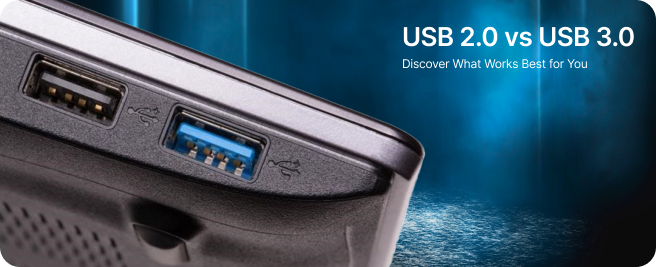
When comparing USB 2.0 to USB 3.0, the key differentiator is data transfer speed.
| USB 2.0 | Offers data transfer speeds of up to 480 Mbps. |
|---|---|
| USB 3.0 | Elevates the game with data transfer speeds of up to 4,800 Mbps, equivalent to approximately 5 GB per second |
This significant speed increase in USB 3.0 makes it ideal for handling extensive data transfers, making it a superior choice for tasks involving large data volumes.
By understanding these differences, you can make informed choices when selecting the appropriate cables and connectors for your specific needs.
3G SDI vs. 12G SDI: Which one do you need?
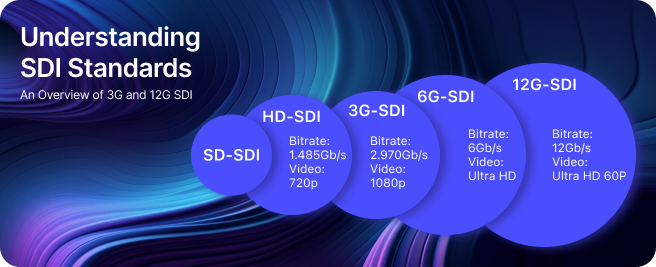
3G SDI (3 Gigabit Serial Digital Interface) and 12G SDI (12 Gigabit Serial Digital Interface) are two different standards used in the broadcasting and professional video industry for transmitting high-definition video signals. They differ in terms of data bandwidth, resolution support, and their applications. Let's compare these two standards:
| 3G SDI | 12G SDI | |
|---|---|---|
| Data Bandwidth | 3G SDI has a data bandwidth of 3 Gbps (gigabits per second). It can transmit a maximum of 1080p (Full HD) video at 60 frames per second (fps). | 12G SDI, on the other hand, has a significantly higher data bandwidth of 12 Gbps. This allows it to support much higher video resolutions and frame rates. |
| Resolution Support | 3G SDI is primarily used for transmitting standard high-definition video signals up to 1080p resolution. | 12G SDI is designed to handle ultra-high-definition (UHD) video signals, including 4K (3840x2160) and even 8K (7680x4320) resolutions. It can also support higher frame rates, such as 60fps in 4K. |
| Cable Compatibility | 3G SDI typically uses standard BNC (Bayonet Neill-Concelman) connectors and coaxial cables. It's compatible with existing 3G SDI infrastructure. | 12G SDI also uses BNC connectors but requires specialized cables designed to handle the higher data rates. These cables are often thicker and more expensive. |
| Use Cases | 3G SDI is commonly used in professional video production for transmitting HD signals within a studio or between equipment like cameras, switchers, and monitors. It's widely used in the broadcast industry. | 12G SDI is used for applications that demand higher resolution and frame rates, such as 4K and 8K video production. It's often used in live sports broadcasting and high-end video production studios. |
| Future-Proofing | While 3G SDI remains a reliable standard for HD video, it may not be suitable for emerging 4K and 8K production needs. | 12G SDI is more future-proof, as it can handle the demands of higher resolution and frame rates, making it a preferred choice for UHD and 8K workflows. |
Unlocking the Potential of Category 6 550 MHz Ethernet Cables
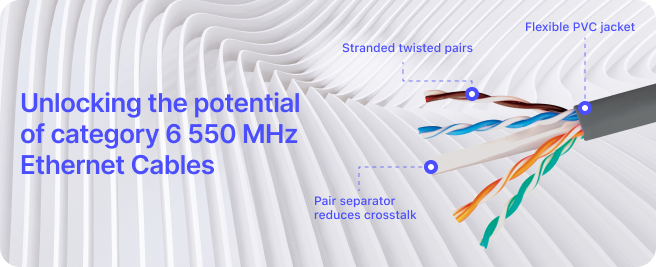
Our high-performance Cat6-rated Ethernet cables are engineered with 24 AWG solid copper wire, providing universal compatibility with a wide array of devices, including PCs, routers, PoE equipment, switches, and various other networked devices. These cables support data transfer rates of up to 1000 Mbps, harnessing the full bandwidth potential of Gigabit-speed networks. Additionally, they offer comprehensive Power over Ethernet (PoE) support, facilitating connectivity and power delivery to devices like PTZ cameras, controllers, and wireless access points. The gold-plated connectors ensure enduring performance.
Discover the Key Benefits of Cat6 550 MHz Ethernet Cables
| Amplified Bandwidth | Cat6 cables are meticulously designed to accommodate higher bandwidth demands compared to their Cat5e counterparts, boasting an impressive bandwidth range of 250 MHz to 550 MHz. This increased bandwidth paves the way for swifter data transmission rates, ideal for demanding applications. |
|---|---|
| Accelerated Data Transfer Speeds | With the capability to deliver Gigabit Ethernet speeds (1 Gbps) over short distances, Cat6 cables are tailor-made for data-intensive tasks such as high-definition video streaming, online gaming, and resource-hungry applications. |
| Minimized Crosstalk | Engineered with advanced insulation and twisted pair technology, Cat6 cables substantially reduce crosstalk and interference between adjacent wire pairs, ensuring reliable and stable data transmission. |
| Superior Signal Quality | Thanks to their enhanced construction and minimized interference, Cat6 cables maintain exceptional signal quality across extended distances when compared to Cat5e cables. This quality makes them an excellent choice for applications requiring longer cable runs. |
| Future-Proofing | Cat6 cables are future-ready, capable of handling higher data rates and compatibility with 10 Gigabit Ethernet (10 Gbps) over shorter distances (up to 55 meters), allowing for seamless network expansion. |
| Backward Compatibility | Cat6 cables seamlessly coexist with older Ethernet standards like Cat5 and Cat5e, offering compatibility within networks featuring legacy devices and cables without any compatibility concerns. |
| Enhanced Reliability | Improved shielding and construction make Cat6 cables more resilient against external electromagnetic interference (EMI) and signal degradation, bolstering the overall reliability of your network connection. |
| PoE Compatibility | Cat6 cables efficiently carry both data and power, making them ideal for Power over Ethernet (PoE) applications. This feature proves invaluable for devices like IP cameras, VoIP phones, and access points, which can draw power through the Ethernet cable. |
| Versatility | Cat6 cables come in various lengths and configurations, including patch cables, bulk cable rolls, and pre-terminated cables, ensuring adaptability to diverse networking setups. |
| Industry Standard | Cat6 cables adhere to industry standards, guaranteeing seamless integration and ease of use across a broad spectrum of networking environments. |
The BZBGEAR Difference
BZBGEAR offers the industry’s best warranty for all products, ensuring unparalleled protection for our clients. Beyond the initial sale, our commitment to service and support extends far into the future. With BZBGEAR, clients can confidently specify, purchase, and install, knowing they have unmatched coverage even in the rare event it’s needed.



